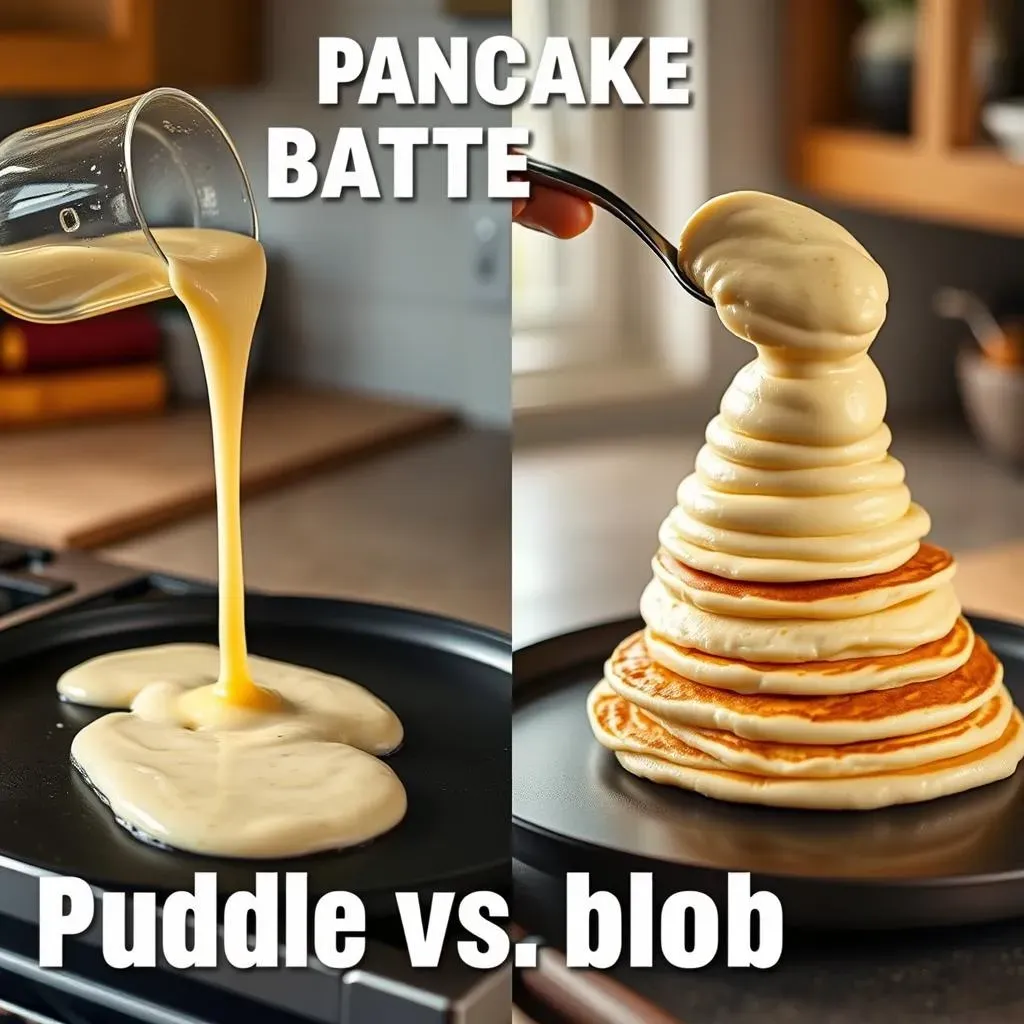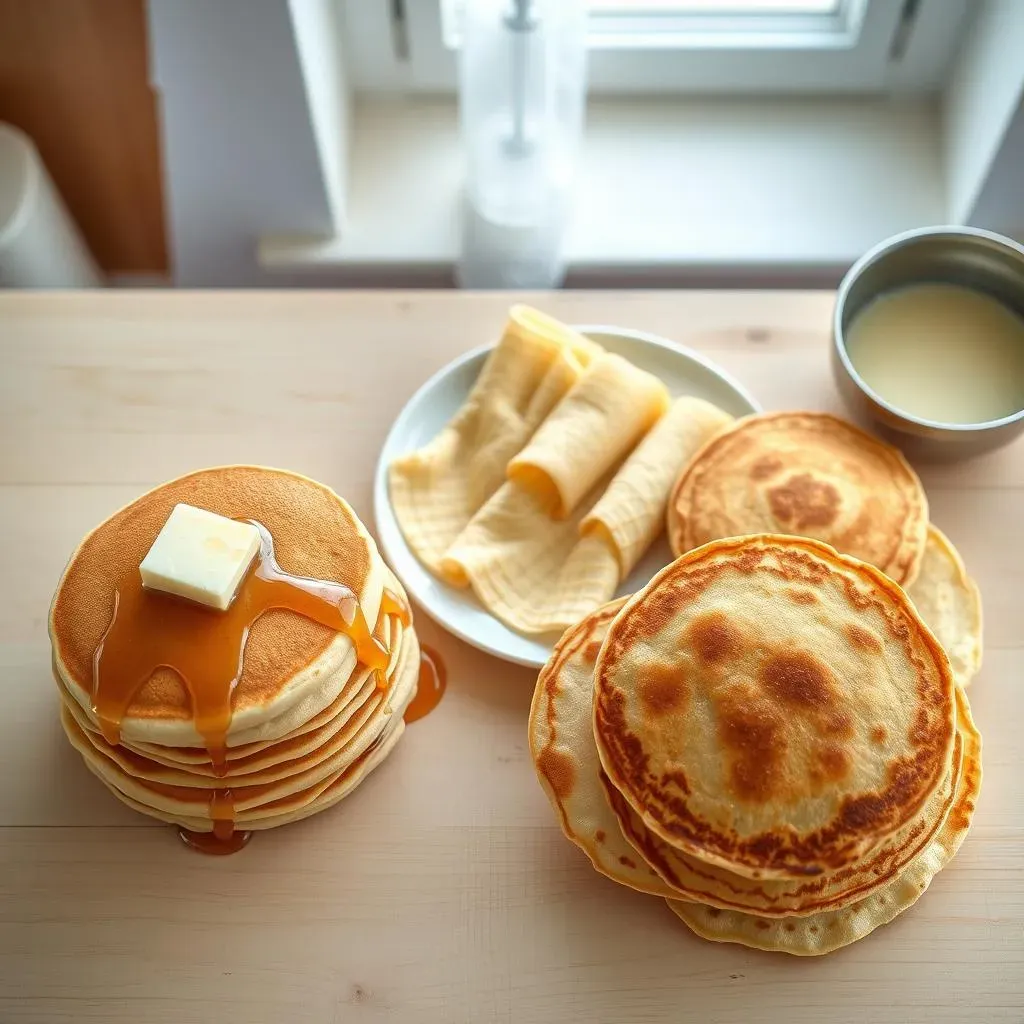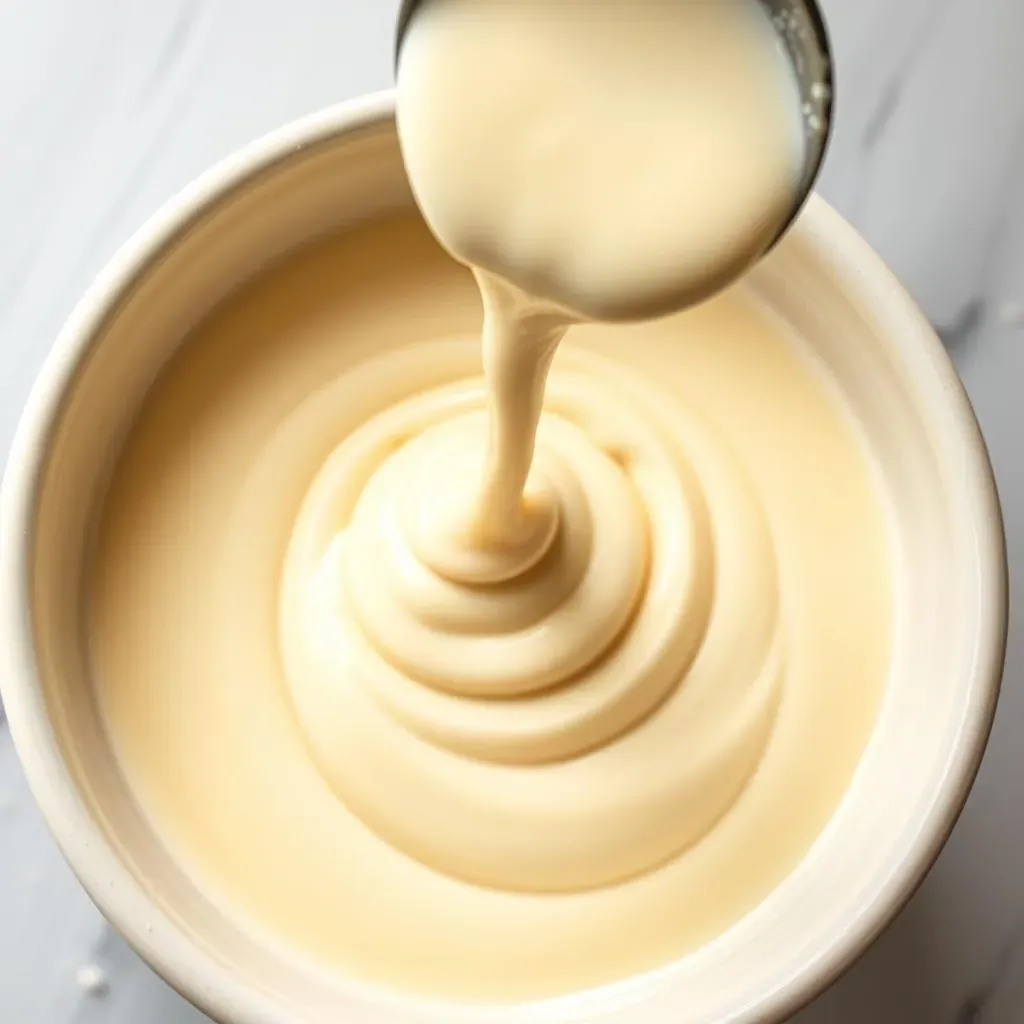Table of Contents
Ever stared at a bowl of pancake mix, wondering if it's the right consistency? You're not alone! The age-old question of "should pancake mix be runny" plagues many a breakfast enthusiast. Is it supposed to be like water, or more like a thick milkshake? Getting the batter right is the secret to achieving those light, fluffy pancakes we all crave, and a runny mix can lead to flat, sad-looking results. This article will guide you through the ins and outs of pancake batter consistency, exploring why your mix might be too thin, when a runny batter is actually okay, and how to adjust it for pancake perfection every time. We'll cover the key differences between thin and thick batters, troubleshoot common problems, and give you the tools to make the best pancakes, regardless of your starting point. So, grab your spatula, and let's get cooking!
The Great Pancake Batter Debate: Runny vs. Thick

The Great Pancake Batter Debate: Runny vs. Thick
The Texture Tussle
Okay, so you're making pancakes, and the first big question hits: what should the batter look like? It's not as simple as just mixing stuff together, there is a real difference between runny and thick when it comes to your final fluffy disc of breakfast goodness. Runny batter tends to spread out on the griddle, resulting in thin, almost crepe-like pancakes. They're not bad, just different. Think of them as the elegant, delicate cousins of the fluffy stack. On the flip side, a thicker batter holds its shape better, giving you those classic, taller pancakes that are perfect for soaking up syrup. It's like the difference between a puddle and a blob – both are wet, but they behave very differently.
What's Your Pancake Style?
The truth is, there's no single right answer, it all depends on what kind of pancake you're aiming for. Are you in the mood for something light and lacy, or do you want a hearty, cloud-like stack? This isn't about right or wrong, it's more about personal preference. Think of it like choosing between a thin crust pizza and a deep dish; both are pizza, but they offer a completely different experience. Knowing what you want from your pancake will guide you on whether a runny mix is going to work, or if you need to adjust the consistency. It's a very personal journey, and there are no wrong turns, just different paths to pancake enlightenment.
Batter Type | Pancake Result | Ideal For |
|---|---|---|
Runny | Thin, crepe-like | Layering, delicate toppings |
Thick | Fluffy, tall | Syrup soaking, hearty meals |
Why Your Pancake Mix Might Be Too Runny (and How to Fix It)

Why Your Pancake Mix Might Be Too Runny (and How to Fix It)
The Usual Suspects
Alright, so your batter is looking more like soup than pancake mix, what gives? There are a few common culprits behind a runny batter. First off, too much liquid is the most obvious answer. Did you accidentally add an extra splash of milk or water? It happens to the best of us, especially when you're half-asleep on a Sunday morning. Another thing to consider is the type of flour you're using. Some flours absorb more liquid than others, and if you're using a lighter flour, it might not be thickening up the mix as much as it should. Finally, sometimes it's just the recipe itself! Some recipes are designed to be a bit thinner, which might not be what you're after.
The Fix-It Guide
Okay, no need to panic, a runny batter isn't a pancake disaster, it's just a minor setback! The easiest way to thicken things up is to add more flour, start with a tablespoon at a time, mix it in, and see if it reaches the desired consistency. Don’t dump it all in at once, you’ll end up with a floury mess. Another trick is to let the batter sit for a few minutes, this gives the flour more time to absorb the liquid. If you're still struggling, a little bit of cornstarch or even a tablespoon of dry milk powder can also do the trick. Remember, patience is key, don't overmix, and add ingredients gradually until you reach that perfect, pourable consistency. Trust me, your future self (and your taste buds) will thank you.
Problem | Solution |
|---|---|
Too much liquid | Add flour, 1 tbsp at a time |
Wrong flour | Use all-purpose or add cornstarch |
Recipe is too thin | Add dry milk powder |
Runny Pancake Mix: When is it Okay?

Runny Pancake Mix: When is it Okay?
The Thin Pancake Advantage
Okay, so we've talked a lot about fixing runny batter, but let's be real, sometimes a thin batter is exactly what you want. If you're aiming for those delicate, crepe-like pancakes, then a runnier mix is your best friend. These pancakes are perfect for layering, wrapping around fillings, or drizzling with all sorts of deliciousness. They cook up quickly and have a light, almost ethereal texture. Think of them as the ballerina of the pancake world, graceful and elegant. So, if you're in the mood for something a little different, don't be afraid to embrace that runny batter!
It's all about the intention, are you going for a thick, fluffy stack or a thin, delicate crepe? The batter should match your vision. There is no hard rule that says pancake batter has to be thick. There is a whole world of thin pancake possibilities out there.
Beyond the Basics: Crepes and More
When we talk about runny pancake mix, we're not just talking about a mistake. Many traditional recipes actually call for a thinner batter. Crepes, for example, are intentionally made with a very runny mix, which allows them to spread thinly on the pan and cook up into those lovely, lacy discs. Think of it as a different form of pancake art. Then, there are other types of thin pancakes from around the world, like Swedish pancakes, that are also designed to be thin and delicate. So, sometimes, that runny batter isn't a flaw, it's a feature! It's about understanding the goal and using the right batter for the job.
It's like having different brushes for painting, each one serves a unique purpose. A thin batter is your fine-tipped brush, for delicate work.
Pancake Style | Batter Consistency | Key Characteristics |
|---|---|---|
Crepes | Very Runny | Thin, lacy, perfect for fillings |
Swedish Pancakes | Runny | Delicate, slightly sweet |
American Style Pancakes | Thick | Fluffy, great for syrup |
Knowing When to Adjust
Now, even if you're aiming for a thinner pancake, there's a limit to how runny your batter should be. If it's so thin that it's practically water, then it's probably not going to work, even for crepes. The batter should still have some body to it, enough to coat the back of a spoon without running off immediately. If it's too thin, you might end up with pancakes that are too fragile and tear easily. So, while a runny batter can be intentional, it's important to know the difference between "thin" and "too thin." It's a delicate balance, but once you get the hang of it, you'll be a pancake master in no time. Remember, even when we're talking about thin pancakes, there is still a level of consistency to aim for.
It's all about finding the sweet spot, that perfect balance between thin and too thin. Like Goldilocks, you have to find the batter that's just right.
Achieving the Perfect Pancake Consistency, No Matter What

Achieving the Perfect Pancake Consistency, No Matter What
The Feel Test: Getting it Just Right
Alright, so you've battled the runny batter, experimented with thickness, and maybe even made a few pancake-shaped mistakes along the way. Now, let's talk about what "perfect" really feels like. It’s not just about following a recipe blindly; it’s about understanding the batter's behavior. When you lift your spoon or ladle, the batter should pour smoothly, not like water but more like a thick ribbon. It should hold its shape for a moment before melting back into the bowl. Think of it as the consistency of slightly melted ice cream or a thick yogurt. This is the Goldilocks zone of pancake batter, not too runny, not too thick, but just right.
The goal is to have a batter that's pourable but not so thin that it spreads uncontrollably on the griddle. This takes practice but it’s really about developing a sense for the right consistency. The more you make pancakes, the more you'll develop that intuition. It’s like learning to ride a bike, it might feel awkward at first, but eventually, you’ll just know.
Tips and Tricks for Consistent Results
Okay, so how do you achieve this pancake nirvana every single time? First, measure your ingredients carefully. Baking is a science, and even a slight imbalance can throw off your batter. Second, don’t overmix the batter. Overmixing develops the gluten in the flour, which can lead to tough, chewy pancakes. Mix just until the ingredients are combined, a few lumps are okay. Third, let the batter rest for a few minutes before cooking. This gives the flour time to fully absorb the liquid, resulting in a more consistent batter. Finally, pay attention to the temperature of your pan. A too-hot pan can cause the pancakes to cook unevenly, while a too-cool pan will cause them to spread. It is like being a chef, you have to know your tools.
The key is to be observant and make small adjustments as needed. It's not about being perfect, it's about learning from each batch and getting a little bit better each time. Remember, even the best pancake chefs have their off days. But with a bit of practice and attention to detail, you’ll be flipping perfect pancakes consistently in no time.
Tip | Why it Works |
|---|---|
Measure ingredients carefully | Ensures proper ratios for consistent results. |
Don't overmix | Prevents tough, chewy pancakes. |
Let batter rest | Allows flour to fully absorb liquid. |
Control pan temperature | Ensures even cooking and prevents spreading. |
The Final Flip: Mastering Pancake Batter Consistency
So, should pancake mix be runny? The answer, as we've seen, isn't a simple yes or no. It really depends on the type of pancake you're aiming for and the initial state of your batter. The key takeaway is understanding what the batter should look like at different stages, and knowing how to adjust it. Whether you're after thin, crepe-like pancakes or tall, fluffy stacks, you now have the tools to make it happen. Don't be afraid to experiment, and remember that a little bit of practice goes a long way. Happy flipping, and may your pancakes always be perfectly golden brown!